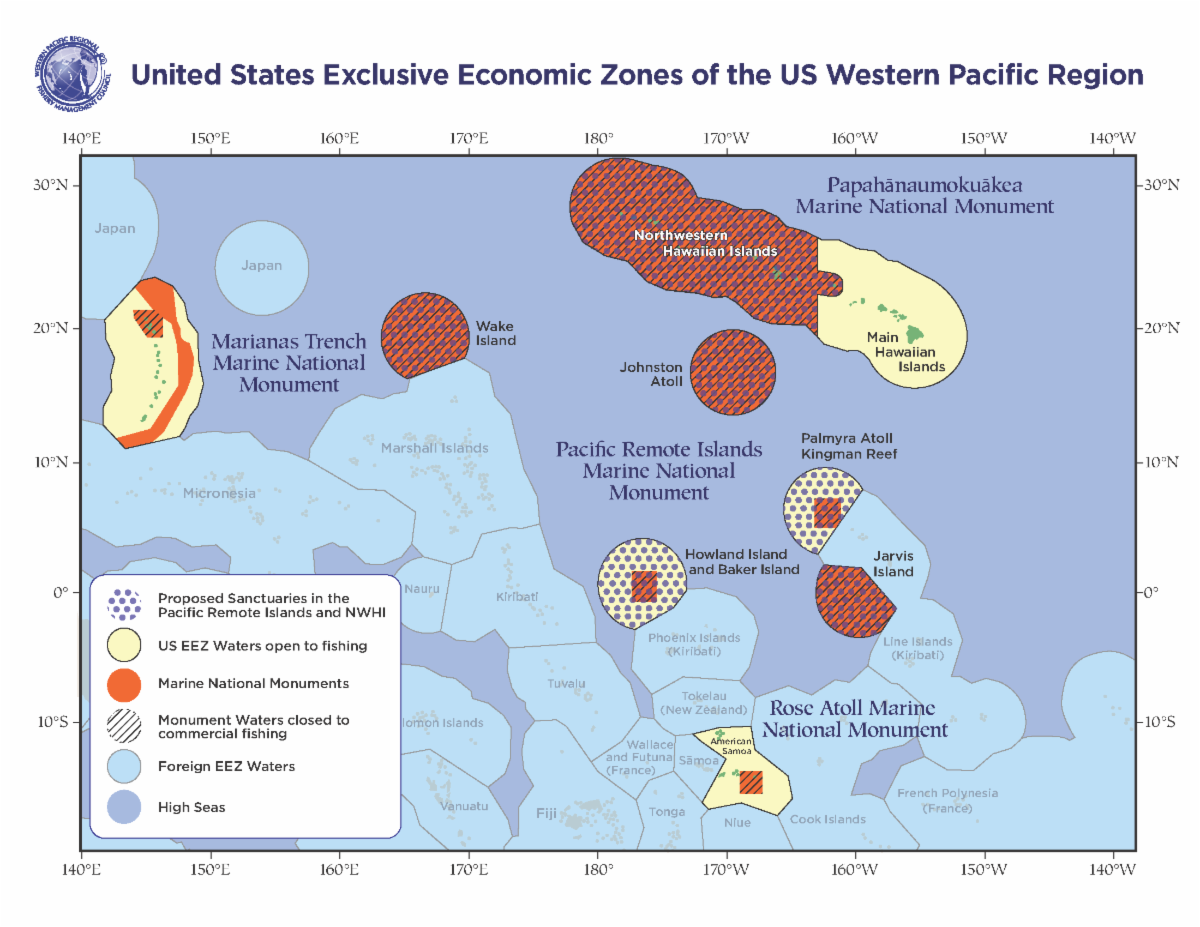
"We are affected by decisions today-we lose our fishery, culture, way of life."
HONOLULU, HI / ACCESSWIRE / March 22, 2024 / Amidst mounting concerns and resounding frustration, the Western Pacific Regional Fishery Management Council convened its 198th meeting this week, where the voices of the fishing community advisors echoed with urgency. Their impassioned pleas highlighted the dire challenges facing the industry, including escalating anxieties over fishing area closures and the destabilizing impact of foreign seafood imports on market dynamics.

Hawai'i Advisory Panel (AP) member and Kaua'i fisherman Abraham Apilado, Jr. said, "If the goal is to sustain fisheries, major changes need to be made today. If the goal is to kill off the fishermen and resources, then keep doing what you're doing, because you're doing an amazing job."
The United States is proposing to overlay and extend the Papahanaumokuakea Marine National Monument (MNM) and potentially the Pacific Remote Islands MNM with sanctuary regulations, compounding current fishing closures (see map).
"The tuna industry is the only industry we have, the government relies on the canneries," said Gene Pan, American Samoa AP member and Fono Representative. "You are stopping us from fishing but not the Chinese. Without the people, there is no Samoa."
Council Chair Will Sword stressed, "Without the StarKist cannery, we cannot continue to sustain our cultural heritage and keep it vibrant. Further disadvantaging our remaining 12 purse seine vessels in American Samoa affects our cannery."
"Our purse seine boats can't compete because it's not a level playing field," said American Samoa AP member and Cape Fisheries CEO Joe Hamby. "The Seafood Import Monitoring Program is not working. U.S. fishers and processors should be protected by a duty on fish imports-seafood security is important. Fishing or processing, it's a matter of having the political will to defend against negative impacts to domestic producers."
Eric Kingma, Hawaii Longline Association executive director, said, "We are facing unprecedented market conditions. There is a large supply of fish coming in, driven by El Niño conditions. The market isn't there because of the huge amount of imported, subsidized, gassed tuna being 'dumped' into the market and retailers are not adjusting downward during periods of high local supply of fresh tuna. Not only is this bad for the local consumer, but it's unfair to the Hawai'i fishing industry. The subsidized foreign imports and retail price gouging on fresh landed 'ahi is really hurting the Hawai'i longline fleet. Recently, vessels are averaging $2-3 per pound for high quality 'ahi, but it's over $30 per pound at the store. It's not fair to consumers or fishermen."
Council Executive Director Kitty Simonds said, "If you were the President of the United States, which would you choose-the people of the U.S. or your legacy?"
Fish Stock Assessment Limitations in the Western Pacific
Hawai'i Council Member Matt Ramsey questioned how NOAA can develop strategies to promote seafood and equity and environmental justice (EEJ), while at the same time limiting fishing opportunities. Sam Rauch, NOAA deputy assistant administrator for regulatory programs, stated, "The goal of NMFS is not to limit fishing opportunities in general. In fact, NMFS is supposed to promote optimum yield, and that is the task that both the Council and NMFS are tasked with under the Magnuson-Stevens Act."
The Council endorsed the Hawai'i and Guam bottomfish stock assessments to update catch limits. The previous Guam assessment, which found the bottomfish stock complex was overfished, used a model likely not suited for data-limited fisheries. The latest assessment, which used the same model with updated catch data, showed an improved stock condition, but not enough to rebuild the stock.
"It is one of the things we have learned particularly in the Western Pacific," Rauch said. "Models that we apply to manage fisheries for [optimum yield] elsewhere in the country sometimes break down when they are applied to artisanal, cultural or subsistence fishing, much like the type of fishing that happens in the territories."
Western Pacific Regional Fishery Management Council:
Secretary of Commerce appointees from nominees selected by American Samoa, the CNMI, Guam and Hawai'i governors: Will Sword, noncommercial fisherman/engineer (American Samoa) (chair); Roger Dang, Fresh Island Fish Co. (Hawai'i) (vice chair); Manny Dueñas, Guam Fishermen's Cooperative Association (Guam) (vice chair); Judith Guthertz, University of Guam (Guam); Pete Itibus, noncommercial fisher (CNMI); Shaelene Kamaka'ala, Hawaiian Islands Land Trust (Hawai'i); Matt Ramsey, Conservation International (Hawai'i); and Gene Weaver, CNMI Judiciary (CNMI). Designated state officials: Dawn Chang, Hawai'i Dept. of Land & Natural Resources; Sylvan Igisomar, CNMI Dept. of Lands & Natural Resources (vice chair); Chelsa Muña, Guam Dept. of Agriculture; and Archie Soliai, American Samoa Dept. of Marine & Wildlife Resources (vice chair). Designated federal officials (voting): Sarah Malloy (acting), NMFS Pacific Islands Regional Office. Designated federal officials (nonvoting): Colin Brinkman, U.S. State Dept.; Brian Peck, U.S. Fish & Wildlife Service; and RADM Michael Day, U.S. Coast Guard 14th District.
Press Contact:
Amy Vandehey
(808) 522-8220
info@wpcouncil.org
SOURCE: Western Pacific Regional Fishery Management Council
View the original press release on accesswire.com

